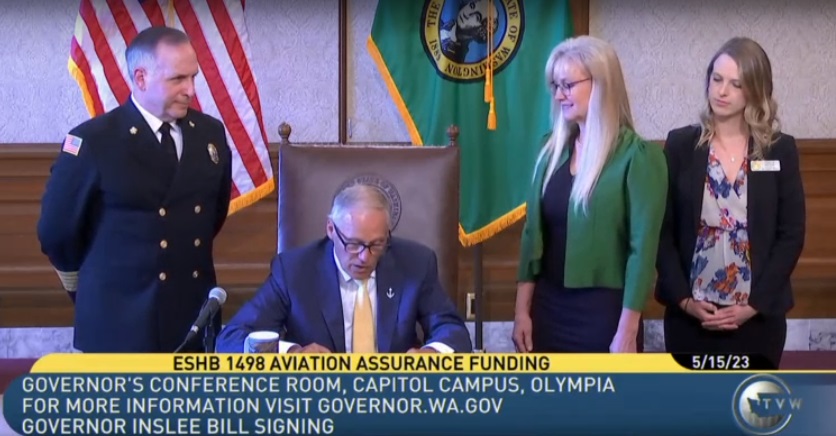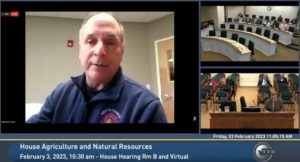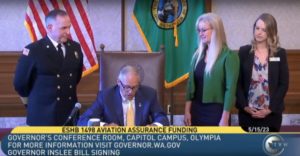
OLYMPIA, WA – After seven years, eastern Washington State Representative Mary Dye (R-Pomeroy) and Asotin County Fire District #1 Chief Noel Hardin of Clarkston have seen their work to allow local fire departments that use aviation suppression efforts on the initial attack of brush, timber, and grass fires to be reimbursed by the state for those expenses come to fruition. Governor Jay Inslee today signed House Bill 1498 into law.
Dye authored the firefighting legislation at the urging of Hardin and has introduced it every two years since 2016, her second year in office.
The so-called “Aviation Assurance Funding” measure was one of the final bills to be released to the House floor for a vote before the 5:00 p.m. deadline, in which legislation had to pass from its chamber of origin to survive in the 2023 legislative session.
“This bill is very important in shoring up the frontline firefighting forces and defense against catastrophic wildfire. With the collaboration of the Department of Natural Resources, we found a path forward to provide the resources necessary to support some of our rural and volunteer fire districts,” Dye said previously.
In February, Hardin testified in favor of the bill during a hearing of the House Agriculture and Natural Resources Committee. He said the bill has a great deal of potential for not only aiding fire districts throughout the state but the state in general.

Dye teamed up with Representative Tom Dent (R-Moses Lake), a ranking member on the House Agriculture and Natural Resources Committee, a pilot, and a senior member of the State Legislative Wildfire Caucus. They negotiated with state Public Lands Commissioner Hilary Franz to craft the proposal into a measure that would have the support of fellow lawmakers and the DNR.
“This has been a long journey — one of collaboration, compromise, and working to educate lawmakers, state agency heads, and others in Olympia about how we could prevent the devastation of wildfires by early aerial mobilization. This issue has been too important for my district and that’s why I have pushed for this legislation year after year. Now, we finally have a workable solution that I hope gains full legislative support,” Dye said. “This would finally give critical help to our local fire departments, who don’t necessarily have the financial resources to mobilize air suppression when it is most needed and are forced to make rapid decisions based on their finances at the time when a fire breaks out.”

“This has the potential to save property, money and lives. By the end of 2021, more than 100-thousand acres had burned in Asotin County. There are many acres of no-man’s land without fire protection. And our local fire departments become the first line of defense,” Dye adds. “With more support for aerial assets, there would be less damage to forests, range and crop lands. Even if the program is successful just a few times, it would likely save millions of taxpayer dollars.”

